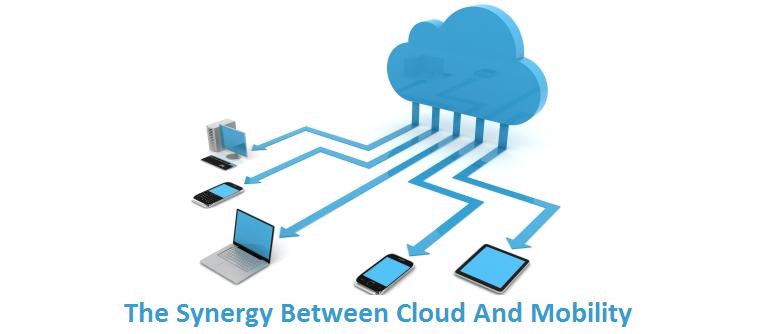In my opinion, cloud and mobility have a synergistic relationship that is so intimate that we cannot talk about one subject without including the other. Without a dynamic environment of cloud computing in the background, it becomes impossible to meet the requirements of scalability and flexibility that apps require. Also, with cloud, apps can explore innovative new features such as those provided by huge volumes of data (Big Data), impossible to be collected individually. This synergy already appears in applications like DropBox and iCloud. The service also Coordinate Google Maps is another fine example of this synergy. In fact, we are looking at two clouds synergistic: on one side, a cloud of mobile devices that people have, whether smartphones and tablets from multiple vendors and technologies and on the other, the immense computational power concentrated in “cloud data centers.” These two clouds, connected, create the space to create innovative apps.
In the coming years more and more innovative apps will be emerging and becoming, at least for some time, “killer applications”. This means that they will have dozens or even hundreds of millions of downloads for some time per month. These applications, when used, will require immense computing power to serve its users. And one more complication, with highly varied demand, it is almost impossible to predict. A traditional data center, configured to meet peak periods will be too costly and would make the project unviable.
This scenario is not impossible since there is already today more than a billion smartphones and 2-3 have two billion of them. As with the emergence of cheaper smartphones, produced in China, this number is expected to increase significantly. Despite the computing power of smartphones and tablets to be very powerful, their high power consumption in computing-intensive applications, which demand more complex computational operations are performed in the background in cloud data centers.
And these new apps will require complex computational resources that will need a strong computing support and storage. Examples? Imagine applications for retailers, who operate customizing offers based on contextual knowledge of the customer. Where is he, his tastes, his habits, etc., all obtained in real time, exactly when he’ll be facing a product on the shelf of a store. These data will not be stored on the mobile device, but in the cloud hosting solutions. Also add up behavioral analysis based on the emotions displayed by the faces of people before a product.
Analyze and make decisions based on this whole complex tangle of data demands high processing power that can only be made in cloud data centers. In addition, apps on smartphones and tablets have interfaces with the Internet of Things, with objects such as your own home interacting with you. In fact, today you leave home with your smartphone, your house keys and your credit cards and debit cards. Soon these cards and the keys will be in your smartphone. This will be the only object. But beyond the home, have the car, appliances, etc.. The interface is via natural cloud, since these devices will require several different interfaces and access information they need to ensure safety in its use. All that has to be in the cloud and not in the smartphone, if only because you’ll have more than one mobile device. Or exchange it with frequency …
These apps will be for business and not just for end users with the most current apps. Every day tablets and smartphones absorb the professional work done on desktops and laptops today and in the coming years they will be the main interface of officials of companies with their corporate systems. A simple arithmetic helps to visualize this situation: generally a tablet or smartphone computational power doubles every year and a half or less. The changing cycle of desktops and laptops in an enterprise is 3 or 4 years on average. Well just imagine how smartphones and tablets will be in 3 years, when the company is renewing its fleet of computer desktops and laptops. Will tablets and smartphones do not fully meet the requirements of safety and capacity? And with new apps in the cloud, which is much more consolidated in 3 years is, in my opinion, inevitable that mobile devices will be the majority in the workplace after the next renewal cycle technology.
The end result is that we must start designing the new application architectures focusing on mobility and cloud computing synergistically from now. The processing will be distributed, in part mobile device, whatever it is, and part of the greater intensity computing in the cloud. And when we talk about cloud computing, it can be distributed for more than a cloud. Hence the issues of interoperability between clouds is gaining importance. Anyway, new times and new challenges. This is the grace we are working in IT.
If we stop one year, we’re obsolete …
